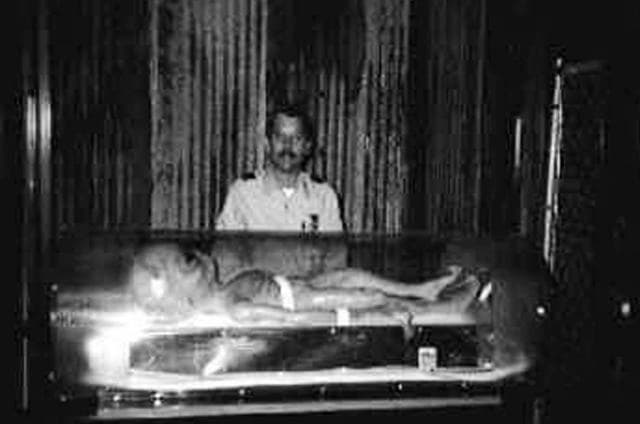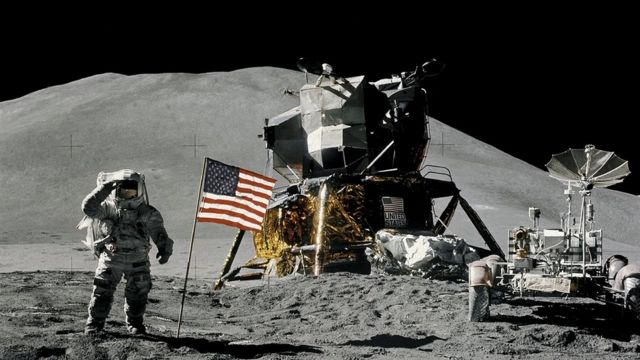If you are interested in ancient mysteries and legends, you may have heard of the Wandjinas, the supreme spirit beings and creators of the land and people according to the Australian Aboriginal mythology. The Wandjinas are depicted in some of the oldest and most fascinating rock art paintings found in Australia, especially in the Kimberley region of Western Australia.
The Wandjinas are also known as Gulingi by the Wunambal people in the Mitchell Plateau area. They are believed to be cloud and rain spirits who came down from the Milky Way during Dreamtime (the Aboriginal genesis) and created the Earth and all its inhabitants. They also taught the Aboriginal people their laws, customs, ceremonies, and how to live in harmony with nature. The Wandjinas are associated with water, fertility, and life force, and they can punish those who break their laws with floods, lightning, and cyclones.

 Aboriginal rock art depicting otherworldly beings on the Barnett River, Mount Elizabeth Station, Australia. Photo: Robyn Jay
Aboriginal rock art depicting otherworldly beings on the Barnett River, Mount Elizabeth Station, Australia. Photo: Robyn Jay
The Wandjina rock art paintings date back to around 4,000 years ago, and were created following a millennium-long drought that ended with the arrival of a wetter climate characterized by regular monsoons. The paintings are found on rocks and caves throughout the Kimberley region, and they are still considered sacred by the Worrorra, Ngarinyin, and Wunumbul people, who are the custodians of the art and the land. The paintings are periodically refreshed by the Aboriginal people as a way of regenerating the life force of the Wandjinas.
The paintings have a distinctive style and features. They usually show large upper bodies and heads with big black eyes and what looks like a halo or a helmet around them. They have no mouths, which is explained by two reasons: one is that they are so powerful that they do not need speech; the other is that if they had mouths, the rain would never stop. The paintings also show figures and objects related to the Wandjinas, such as the Rainbow Serpent, yams, boomerangs, and stone axes.

 Indigenous Australian rock art in the Wandjina style, located in the Kimberley region of Western Australia. Photo: Claire Taylor
Indigenous Australian rock art in the Wandjina style, located in the Kimberley region of Western Australia. Photo: Claire Taylor
The Wandjina rock art paintings have attracted many interpretations and speculations from different sources. Some see them as stylized representations of humans or animals (for example, owls), while others regard them as symbols of spiritual power and authority. And some even think they might depict aliens.
The white faces, large black eyes and long noses that the Wandjina are often painted with have made some people suggest that these features resemble those of extraterrestrial beings, and that the Wandjina may have been ancient visitors from outer space. Some even suggest that the halo or helmet around the Wandjina’s head is a sign of advanced technology or knowledge, and that extraterrestrials may have actively participated in the creation process – a concept reflected not just in the Dreamtime narratives of indigenous Australians but also in the myths and legends of numerous ancient civilizations globally.

 Alien or sky being? Photo: Robyn Jay
Alien or sky being? Photo: Robyn Jay
As for the role of Wandjinas in the Aboriginal creation story, the “sky-beings” or “spirits from the clouds,” are believed to have descended from the Milky Way during Dreamtime to shape the Earth and its inhabitants. Realizing the magnitude of the task, they returned home to bring more Wandjinas. Assisted by the Dreamtime snake, they descended again, spending their Dreamtime as creators, teachers, and deities to the Aboriginal people they had crafted. Eventually, the Wandjinas vanished, descending into the earth and residing at the base of the water source linked to each painting. There, they perpetually generate new ‘child-seeds,’ considered the origin of all human life. Some of the Wandjina also returned to the sky and can now be observed as celestial lights moving high above the earth at night.
Now, could those celestial lights be alien spacecrafts and the Wandjina their owners? Numerous other logical questions arise, such as why the Wandjinas were depicted with white skin when the Aboriginal people had black skin. Then, there is the disproportionate size of the eyes in relation to the face and nose, and, of course, the consistent absence of a mouth in the depictions that we have already touched upon.

 Among the many captivating cave paintings, some are particularly interesting—these two, for example, seem to depict human(oid) figures wearing spacesuits. The intriguing portrayal of a figure clad in a pinkish robe with a double semicircle around the head on the right is the most visited of the paintings. What makes it even more fascinating is the presence of an inscription, consisting of six characters in an entirely unfamiliar alphabet to researchers. Photo credits: Ian Cochrane / Unknown
Among the many captivating cave paintings, some are particularly interesting—these two, for example, seem to depict human(oid) figures wearing spacesuits. The intriguing portrayal of a figure clad in a pinkish robe with a double semicircle around the head on the right is the most visited of the paintings. What makes it even more fascinating is the presence of an inscription, consisting of six characters in an entirely unfamiliar alphabet to researchers. Photo credits: Ian Cochrane / Unknown
But while the resemblance between the Wandjinas and the typical extraterrestrial portrayal in art, movies, and eyewitness accounts is indeed striking, there is absolutely no evidence to support the extraterrestrial hypothesis, and it may also be disrespectful to the indigenous Australians who regard the Wandjina as sacred ancestral spirits.
Whatever the truth may be, the Wandjina rock art paintings are a remarkable testimony of the rich and complex culture and history of the Aboriginal people. They reflect their deep connection with their land, their ancestors, and their spirituality. They also challenge us to expand our horizons and question our assumptions about the past, present, and future of humanity.
Sources: 1, 2, 3
A sociologist and English major by degree, I’ve worked in the area of civil society & human rights and have been blogging in the fields of travel, nature & science for over 20 years.

